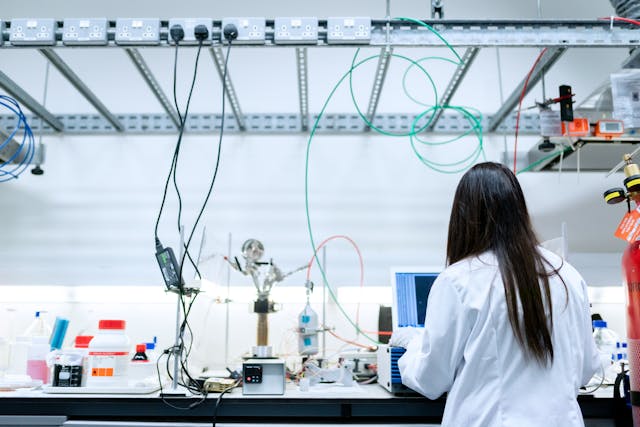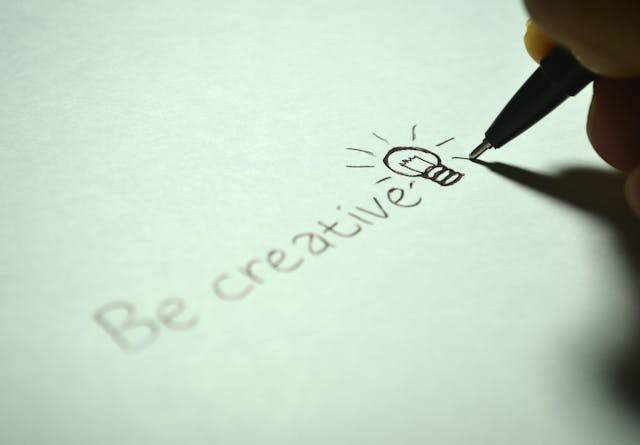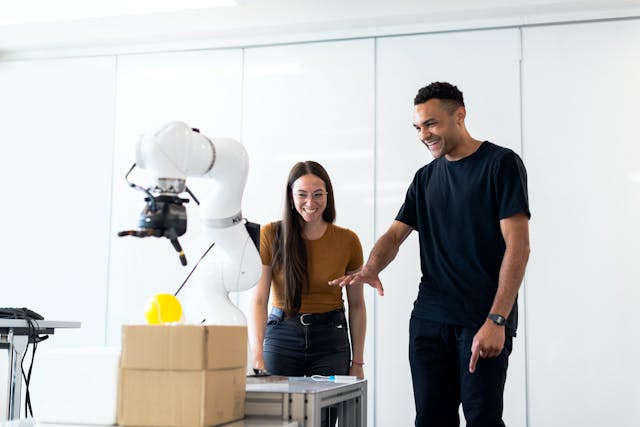Design thinking and disruptive innovation have become more important tools for producing innovative goods and tackling challenging problems in the always changing fast-paced environment of today. This paper explores these ideas and shows how they may be used to propel revolutionary change across several sectors.
Dealing with Disruption Innovation
The process by which a good or service starts in modest uses at the base of a market and then aggressively goes upmarket, until eliminating existing competitors is known as disruptive innovation. Inspired by Clayton Christensen, this idea emphasises how tiny businesses with less resources may effectively confront more established, bigger corporations.
Essential Attributes of Disruptive Innovation:

- Usually beginning with simpler, more reasonably priced solutions that enable a wider audience to use things, disruptive innovations simplify and accessibility of items.
- Usually by addressing unmet demands or inefficiencies, these developments either establish new markets or greatly alter already existing ones.
- Often including the use of new technologies or creative business models redefining the value proposition, disruptive innovation is technology and business model shift.
Design Thinking’s Part in Action

Integrated with the needs of people, the potential of technology, and the criteria for corporate success, Design Thinking is a human-centered method of invention. This approach promotes iterative prototyping to provide original ideas and a thorough awareness of consumer demands.
The Design Thinking Process:
- Research and direct interaction help one to better grasp the user experience and hence identify their wants and issues.
- Clearly state the issue depending on the acquired insights, then frame it in an approachable and targeted manner.
- Brainstorming sessions and creative thinking activities help you to produce a broad spectrum of ideas and answers.
- Create physical models of the concepts so that testing and experimentation may take place.
- Test the prototypes with actual users, get comments, and then improve the answers depending on the new knowledge.
Combining Design Thinking with Disruptive Innovation

Combining design thinking with disruptive innovation offers a strong structure for producing innovative ideas and addressing difficult challenges. These approaches interact as follows:
- Design thinking guarantees that disruptive ideas are firmly anchored in user demands, so producing not only technologically advanced but also very relevant and beneficial products for consumers.
- Design thinking’s iterative character lets disruptive ideas be continuously refined and adapted, therefore lowering the chance of failure and improving the result at last.
- Both approaches benefit from cross-disciplinary cooperation amongst several teams, therefore promoting a creative and open-minded culture necessary for innovative development.
Workable Illustrations of Design Thinking and Disruptive Innovation

Originally written off by the hotel sector, Airbnb used disruptive innovation by providing a basic, reasonably priced alternative for temporary accommodation. By means of design thinking, they continuously improved their platform in response to customer comments, thereby producing a flawless and reliable experience for hosts and visitors.
By bringing electric automobiles that exceeded conventional vehicles in terms of efficiency and sustainability, Tesla upset the automotive sector. By use of design thinking, they concentrated on user experience, building automobiles with innovative technologies and aesthetically pleasing design that appealed to consumers.
Uber upset the taxi business by using mobile technology to provide a more reasonably priced and convenient means of transportation. By means of design thinking, they maximised the user interface and experience, therefore guaranteeing dependability and simplicity of use for drivers and passengers.
Applied Design Thinking and Disruptive Innovation

- Foster a Culture of Innovation: Promote an organisational culture that welcomes risk-taking, experimentation, and ongoing learning to foster innovation. Create settings where ideas could blossom and be tried without regard to mistakes.
2. Invest in Research and Development: Set aside funds for R&D projects investigating cutting-edge technologies and market trends. Finding possible disruptive chances depends on this investment.
3. Talk with Users: Stay close to users to have constant understanding of their changing requirements and preferences. This input will help to guide the design thinking process and guide tactics for disruptive innovation.
Create cross-functional teams capable of iterating on ideas and rapidly adjusting to evolving conditions. Agile techniques encourage adaptability and responsiveness, therefore complementing design thinking.
Design thinking and disruptive innovation are two effective approaches that taken together might produce ground-breaking ideas and products. Organisations can negotiate the complexity of contemporary marketplaces and accomplish transforming success by emphasising user demands, welcoming iterative experimentation, and promoting cross-disciplinary collaboration. Adopting these strategies guarantees that solutions are very relevant and effective for consumers as well as stimulates creativity.





